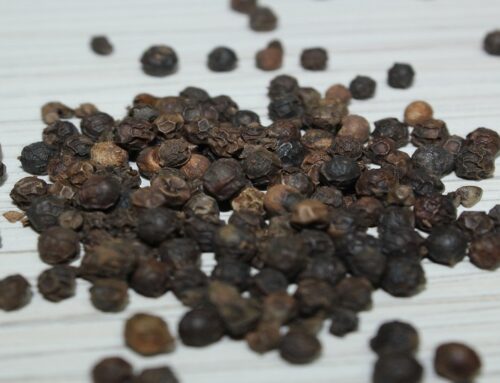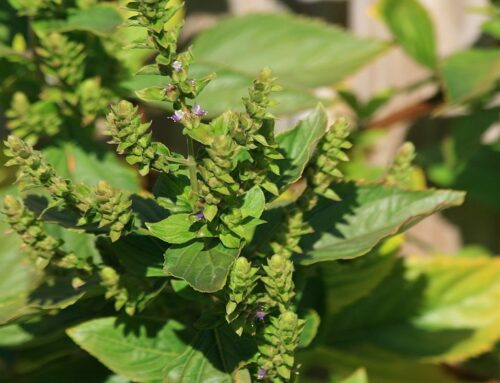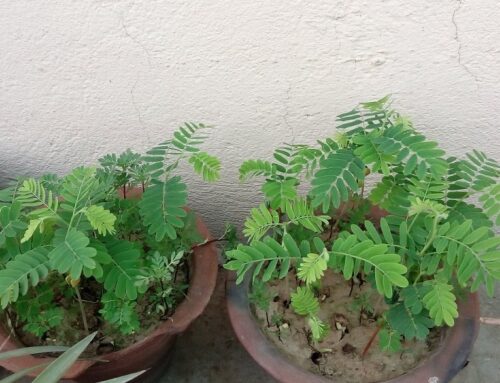Use of various types of polymers and polymer-based materials like polystyrene, polypropylene, polyvinyl butyral, polyvinyl alcohol, ethylene vinyl acetate, and polyethylene is gaining momentum and popularity due to multitudes of advantages these packaging materials offer to both the wholesale and retail sectors.
Polyethylene (PE): PE is used for the production of shrink films; flow pack films; top seal films; cover sheets for trays; single film bags, and tubular netting. Knitted tubular netting made from PE is an attractive type of packaging for potatoes, vegetables and fruits. It is strong, economical in use and has a large number of different processing applications. High Density Poly Ethylene and Low Density Poly Ethylene are two major types of PE used for the production of various sizes of sealable bags, PE films and tubular nets.
High Density Poly Ethylene (HDPE): HDPE has good barrier properties and therefore mainly used for making Stretch or Cling Films; and Raschel Bags.
Low Density Poly Ethylene (LDPE): LDPE has Low Water Vapor Transmission Rate (WVTR) but High Oxygen Transmission Rate (OTR). Therefore LDPE is used as a base material for modified atmosphere packaging (MAP) films. LDPE is abundantly used for the production of lidding, base webs, and trays. LDPE is used for making monofilament net films (knitted/woven) and tubular netting (knitted/woven) also.
Vinyl Polymers: Major vinyl polymers that are used in the packaging industry are Poly Vinyl Chloride (PVC) and Ethylene Vinyl Acetate (EVA).
PVC (Poly Vinyl Chloride): PVC is used for producing top quality stretch films, which are produced by cast extrusion. This method of extrusion ensures low tolerance levels, consistent quality, providing excellent strength and stretch. This unique strength of the films (due to low manufacturing tolerance levels) can enable food processors to reduce the thickness and therefore the costs of the films they use. There are single layer PVC films and multilayered PVC films. Single layer PVC films, although very tough, are in fact single layer and therefore fully recyclable with relatively low waste disposal costs. PVC films are good gas barriers but moderate oxygen barriers. PVC films are extensively used for the production of thermoformed trays.
uPVC (Unplasticised Polyvinyl Chloride): uPVC films (unplasticised polyvinyl chloride film) are made from PVA/PVOH (poly vinyl alcohol), a water-soluble synthetic polymer. This is a highly cost-effective thermoformed packaging material and is available in a wide variety of gauges and finishes. Major properties of uPVC films include excellent film forming, emulsifying, and adhesive properties. It is resistant to oil, grease and solvent.
Polyvinylidene chloride (PVdC ): Polyvinylidene chloride, a polymer derived from vinylidene chloride is applied as a water-based coating to enhance the barrier properties of other plastic films such as BOPP and PET.
PVOH (Poly Vinyl Alcohol): PVOH is another polymer-based packaging material available in the market. Major properties of PVOH include high tensile strength, flexibility, as well as high oxygen and aroma barrier. It has a melting point of 230°C and 180-190°C for the fully hydrolyzed and partially hydrolyzed grades. It decomposes rapidly above 200°C and acts as a carbon dioxide barrier in polyethylene terephthalate (PET) bottles. PVOH may be used as a biodegradable plastic baking sheet and also as a water-soluble film useful for packaging. PVOH is extensively used for making water-soluble packaging films and biodegradable baking sheets.
EVA (Ethylene Vinyl Acetate): EVA is a copolymer of ethylene and vinyl acetate). Major properties of EVA include good clarity and gloss, good barrier properties (High WVTR& OTR), low-temperature toughness, stress-crack resistance, hot-melt adhesive and heat sealing properties and resistance to UV radiation. EVA emits little or no odor and is competitive with rubber and vinyl products in many electrical applications. It is used as a shock absorber and popularly known as ‘expanded rubber’ or ‘foam rubber’. EVA is extensively used for the production of lids, base webs and trays.
EVOH (Ethylene Vinyl Alcohol): Ethylene Vinyl Alcohol, a copolymer of ethylene and vinyl alcohol is commonly used in food packaging applications primarily as an oxygen barrier for shelf life extension. EVOH is defined on the basis of ethylene content: lower ethylene content grades have higher barrier properties and higher ethylene content grades have lower barrier properties.
Polystyrene (PS): Polystyrene is a highly transparent polymer used for the production of various types of packing materials. Polystyrene-based packaging materials that are popular in the packaging industry are OPS (Oriented Polystyrene); EPS (Expanded Polystyrene); HIPS (High Impact Polystyrene) and XPS (Extruded Polystyrene).
OPS (Oriented Polystyrene): Oriented Polystyrene is highly flexible and is used for the production of flexible packaging options such as flexible pouches. It can be used as a molded packing material. It is mainly used for the production of Oriented Polystyrene Films and Thermoformed Trays.
EPS (Expanded Polystyrene): EPS is normal polystyrene expanded into foam through the use of heat. It is a rigid cellular plastic, which can be presented in several ways, adapting to different uses. This material is used for fruit and vegetables crates, and other agricultural and gardening products. The EPS package is the best packaging solution for perfect food preservation as it provides best standards of sanitary quality, thermal insulation and chemical resistance. It also provides resistance and protection against moisture and shocks. It is resistant to compression and has good display effects which work in favor of visual merchandising. It is extraordinarily light weight and has ease of conformity.
EPS packages can easily be customized through several packaging techniques. Several researches carried out in various fruits and vegetables have now confirmed the fact that the freshness of fruits and vegetables is best if preserved in EPS packages. This is basically due to the effects of thermal and moisture protection. When longer the keeping period, this effect is clearer, comparatively to other packaging materials. EPS packages are made of 100% recyclable material. Several analyses of EPS show that it is highly eco-friendly. Moreover, EPS manufacturers are members of CICLOPLAST, an organization that guarantees compliance with the Packaging and Residues Law – Ley 11/1997. One of the leading manufacturers of EPS packages is Styropack Inc, Denmark. They supply EPS boxes for fruits and vegetables. Delicate fruits and vegetables need to be protected in stable and water-resistant packaging during transportation. For this purpose EPS boxes are very well suited, as the material is shock-absorbing, thermal insulating and light- weight. It is very easy to handle also. Another global player in the field of EPS packaging is Associated Packaging Inc. They manufacture and supply a wide range of finely finished EPS produce trays profile of which ensures that the consumer has maximum product visibility.
Extruded Polystyrene (XPS): XPS is different from expanded polystyrene (EPS) and is commonly known by the trade name Styrofoam. It has low thermal conductivity and makes a more-uniform substitute for corrugated cardboard.
High Impact Polystyrene (HIPS): High impact polystyrene is used for the production of HIPS (high impact polystyrene) punnets and thermoformed trays. A major player in providing HIPS packaging solutions is Sealed Air Corporation. Its ‘Cryovac Barrier Trays’ are made from HIPS and come in a wide range of sizes, depths and colors. These HIPS trays have excellent barrier performance characteristics to maximize product shelf life.
We have a book with detailed information on this topic and for more info, please click here…
Both kindle eBook version and Paperback version of this topic is available at all Amazon stores. For more info, click here…
Polyethylene terephthalate (PET or PETE)/Polyester: PET is an effective thermoforming material with many finishes and a good range of temperature performances. Sharp Interpack, a global player in providing PET packaging solutions, is a specialist producer of CPET (crystallized PET) material for dual-ovenable packaging solutions and APET (amorphous PET) for high clarity food packaging. PET is used for the production of multilayered laminates through lamination process. Associated Packaging Inc, another leader in PET packaging solutions has introduced TAIRILIN polyester films (PET) in the market. It is used for the packaging of microwaveable and ovenable food products. TAIRILIN is a biaxially oriented polyester film with excellent tensile strength; excellent mechanical characteristics; chemoresistance; heat resistance; excellent transparency; glossy surface; good dimensional and chemical stability; excellent electrical characteristics and excellent heat sealability.
CPET: Crystallized PET: CPET, a thermoplastic polymer used for manufacturing synthetic fibers; food containers and thermoforming applications. CPET is the most common packaging material used in dual-ovenable packaging applications. CPET is also used for the production of bottles; trays and punnets. Its service temperature ranges from -40OC to +220OC and hence suitable for freezers, microwaves, conventional ovens and industrial ovens.
APET: Amorphous PET: APET is best suitable for the packaging of cold and ambient temperature food products. It serves as excellent barrier for MAP systems. APET has high clarity and hence used for high clarity food packaging. A standard product of APET is freezable to -18 C and its service temperature ranges from -40 C to +65 C. It is used for the production of lidding, thermoformed trays, bottles; and punnets.
Polypropylene (PP): Polypropylene is a stiff and tough thermoplastic polymer that can be made either transparent or opaque. It is very economical to use. It has a melting point of 160 C and hence suitable for making food containers that are suitable for the dishwasher. It is strong enough to withstand industrial hot filling process. Polypropylene is mainly used for the production of trays, lenobags and punnets. It is widely used in manufacturing microwaveable packaging materials as well as modified atmosphere packaging materials. Special formulations of polypropylene are available for freezer applications. Various types of Polypropylene (PP) packaging films available in the market are BOPP (Biaxially Oriented Polypropylene film); CPP (Cast Polypropylene film); MOPP (Mono-Oriented Polypropylene film) and NWPP (Non-Woven Polypropylene film).
Amcor Seal-Plus, Polypropylene packaging from Amcor Flexibles: Amcor Flexibles, a global supplier of packaging solutions for horticultural sector has launched a concept called Amcor Seal-Plus in polypropylene packaging. This innovative packaging technology consists of a unique OPP film with an improved seal performance called ‘SealPlus’. The main benefits of SealPlus over standard OPP film are its outstanding hot tack performance (this allows for the potential to increase machine speeds for heavier/dense fast dropping products), up to 1Kg recommended maximum weight (compared to 750g for standard OPP), its superior seal integrity and more consistent gas levels (therefore more consistent product).
Polyamides (PA): It is a naturally-occurring polymer that contains monomers of amides held together by strong peptide bonds. For artificial synthesis of PA, polymerization or solid-phase synthesis is used. Artificially-made PA is stronger and more durable making it suitable for a wide range of food packaging applications.
We regularly publish informative videos on various “Food, Agriculture, Gardening and Horticulture” topics. You may view these videos here…
You may also check out our Digital Publishing Services for Food, Agriculture, Gardening and Horticulture Sector by visiting this link







Leave A Comment
You must be logged in to post a comment.